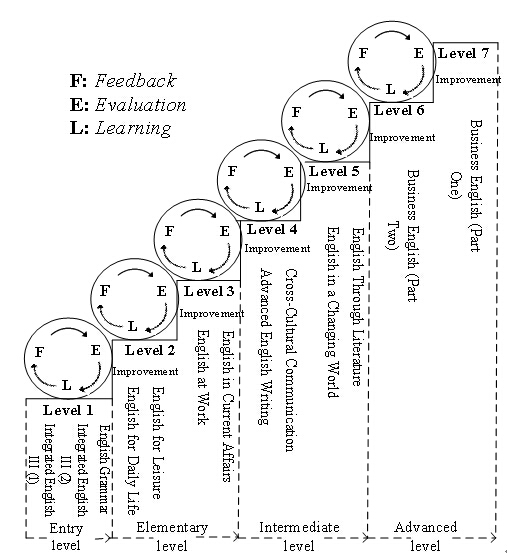5. How can we prevent dropouts and increase retention rate?
(1) Formula to calculate retention rate
The study proposes the following formula to calculate retention rates in open and distance education in China:
Student Success = Correct Course Choice + Training on Distance Learning Skills + Guidance on Course Choice + Course Concern + Concern for School Reports in the First Semester + Education on Determination for Success
In response to this formula, during the recruitment period specialized teachers should be sent to assist the students in choosing a major that is appropriate to their own learning ability. After entrance, the first task is to give training on distance learning skills, and improve the students’ computer application abilities, time management and teacher-student interaction skills. The teachers will pay attention to the training and improvement of the three basic skills during the course of teaching. Specialized teachers should give individualized guidance to each student in choosing courses for each semester. They should focus on students that are falling behind in course learning. Attention should be paid to the students’ academic achievements, particularly in the first semester, so as to give weak students timely individualized instruction and to make corresponding adjustments. Training of focus and self-confidence should be given throughout the whole learning process to help students maintain learning motivation.
(2) Dropout re-entry
The paper reviewed a case study (Qi Yansheng et al., 2011; Qi Yansheng, 2012) and special interview on dropout re-entry. The essential factors to ensure dropout re-entry are shown in Figure 4.
Figure 4 Essential Tasks for Dropout Re-entry
According to Figure 4, the essential tasks for dropout re-entry include timely understanding and analysis of the surface and underlying reasons for dropouts, and relevant adjustment or intervention measures. Through intervention, students may change their decision, according to one of the following three situations: some choose re-entry immediately; some indicate that they will return to school when personal conditions permit; and others choose to leave. In view of these conditions, the next task for re-entry is to pay consistent attention to reclamation: regular contact is kept with dropouts that have displayed the intention to return, and in the meantime a "green channel" is set up for them to return to learning. Overall, the possibility of dropouts returning to school should never be ruled out.
(3) Improving the teaching system of distance education universities
Improved teaching measures at distance education universities are the prerequisite for the above dropout prevention and re-entry measures. Only then is it possible to begin improving retention. However, a large number of studies show that shortages still exist in the teaching system of distance education universities in China, which directly and indirectly influence dropout rates. However these problems remain relatively concealed, and most are discovered from the research perspective.
The research team for this project is not only made up of professional research fellows but also persons in charge of English Majors at provincial RTVUs, allowing the research to conduct an in-depth examination of the 10-year practice of open and distance education in China. Using English majors as an example, the problems reflected in the research are as follows.
1)Low agreement between the establishment of majors, teaching content and social requirements
According to the study, some students lack drive because the content of their major has no application in their professional life. Therefore, the study suggests “improving the professional relevance of majors and course content, increasing knowledge and input, as well as practical training relevant to vocational development, such as adding Business English, Tourism English, and English for Exhibitions and Trade Fairs majors to the existing English majors.
2) Difficulty span of teaching content is too wide
During the study, many dropouts commented that they were “poorly prepared in terms of knowledge” or that “the courses are too difficult”. They are unable to understand face-to-face lectures and complete assignments. They feel frustrated by examinations, which causes them to give up. Lecturers find it hard to establish an appropriate course gradient, which makes it difficult for the students to learn effectively. Therefore, the study suggests attention be given to the concept of “comprehensible input” in order to balance the difficulty of the teaching content. Full consideration should be given to the "gradual" and "spiral" principles in setting up teaching content and teaching requirements. A Hierarchical English Teaching Model has been designed and tailor-made for RTVU students. See Figure 5.
Figure 5 indicates that learning levels are divided according to the entrance examination and corresponding hierarchical courses are assigned accordingly. If the teacher determines, through feedback and examination, that a student has reached a certain level, the student can continue on to study more advanced courses. If the teacher determines that a student hasn’t reached the required level, the student will have to go on learning until they qualify. The Hierarchical English Teaching Model reflects a progressive coherent and spiral learning track. Within this formula, it is easier for students to feel progress and improvement and to experience enrichment and happiness. As such, they can maintain their enthusiasm for learning (Zhang Ying, 2012).
Figure 5 Hierarchical English Teaching Model